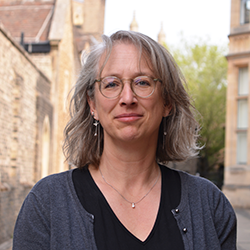
Argentinean trade unions are a fascinating field, in part because of a history of (often contested) support for the Peronist movement from the 1940s onwards. In a world where – the story goes – structural adjustment irrevocably weakened classic trade unions and new forms of social movements emerged in their stead, the persistence and even recent resurgence of trade unions in Argentina is noteworthy, if not actually as unusual as some think. There are a number of tensions that cross the Argentinean labour movement – if indeed it can be spoken of in the singular. One of the most important of those tensions is that between the more classically corporatist Peronist unions grouped in the CGT (Confederación General del Trabajo), and those that are part of other more oppositional trends: known as ‘classista’ ones in the 1960s and 70s, and their contemporary descendents, newer ‘autonomist’ initiatives that emerged in reaction to Carlos Menem’s structural adjustment policies of the 1990s.
Such initiatives are taking place both in very old unions as is the case with public sector workers and teachers, and in newer organisations, such as the CTA (Central de los Trabajadores de Argentina, established in 1992) or the newest union, that of subway workers who broke away from the UTA (Unión Tranviarios Automotores) to form their own trade union in 2009. The initiatives are complicated by a model of labour representation enshrined in law that dictates full recognition for only one trade union per occupational activity (with the important exception of public sector workers). Thus, the CGT is the only fully legally recognised workers’ central in Argentina, and one of the strongest demands from the CTA is full legal recognition.
My exploration of trade unionism takes that tension as its organisational framework, since I take the one occupation with plurality of trade union representation and compare two of the unions operating there. The occupation is that of public sector workers, or ‘trabajadores estatales’, and the two unions I am working with are ATE, the Asociacion de Trabajadores del Estado, and UPCN, the Union del Personal Civil de la Nacion. ATE is a core actor in the CTA, while UPCN is one of the stronger unions in the CGT. That said, I want to go beyond just making a distinction between peronist and ‘classist’ or ‘autonomous’ trade unions and explore issues such as what makes a (good) leader, how people perceive their membership of a trade union, why they join up and continue to be members, what they do, how they relate to the state, what is their vision of the state they want, and so on.
For further information on this project, see my page at the Open Anthropology Cooperative.

